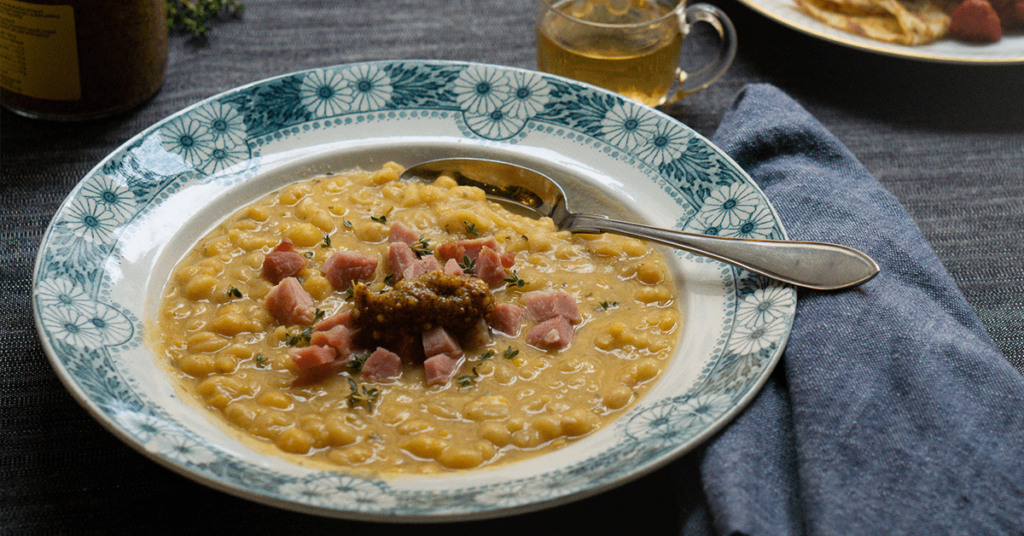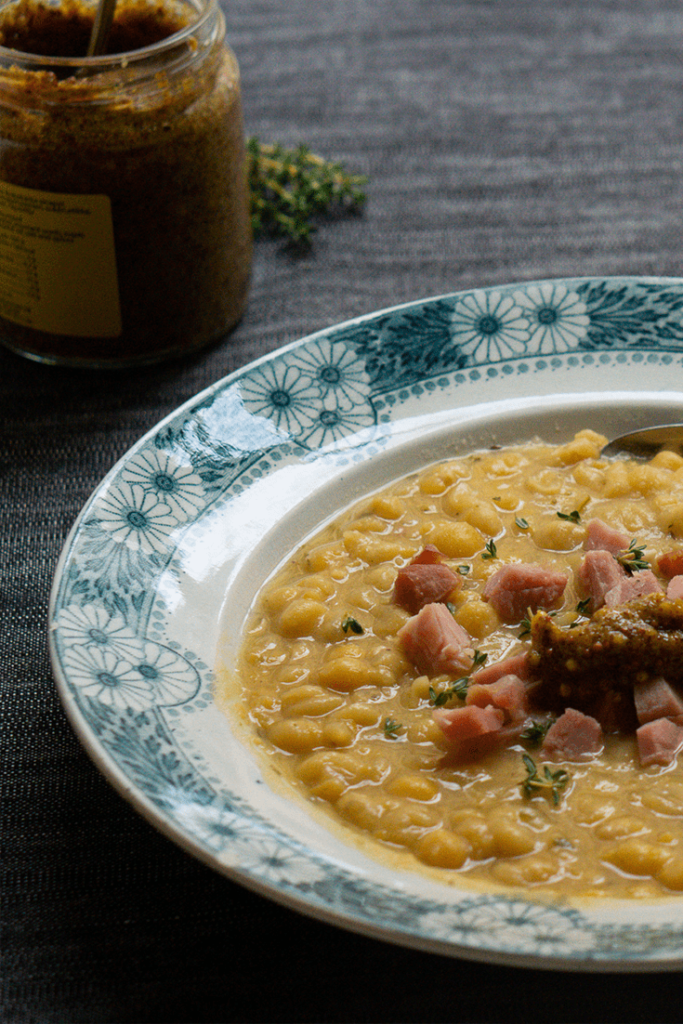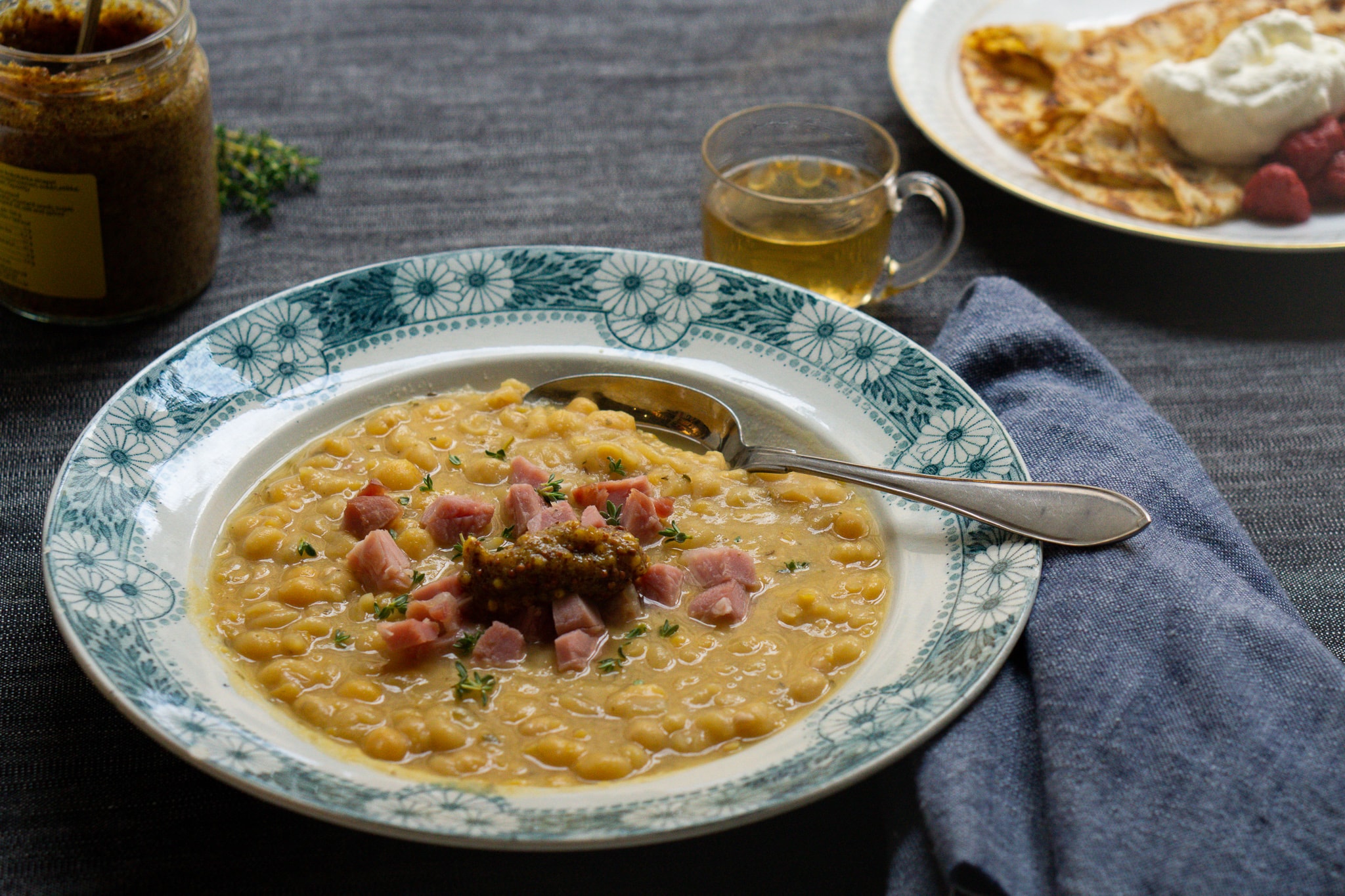Despite being a sought-after traditional dish, pea soup has a bit of an unfortunate association in Sweden: murder.
After eight years of living imprisoned in his palace, King Erik XIV died in 1577. Some sources immediately claimed that Erik’s brothers had poisoned him to claim the throne. And in the early 1600s, Johannes Messenius claims in his Scondia Illustrata that the deed was done with poison-laced pea soup. That rumor stuck.
Historian Dick Harrison notes that Erik’s remains and coffin contained arsenic when they were examined in the late 50s. However—no traces of pea soup in his stomach. Harrison claims that it is more likely that the poison was served in wine. But, if you ask any Swedish school kid, the death-by-pea-soup is probably what they’ll remember of poor king Erik.
So, you should be able to enjoy pea soup peacefully. If you’ll eat it in Sweden, there’s a chance that you’ll do so on a Thursday.
Thursday means pea soup and pancakes
A Thursday tradition is “ärter och fläsk”—that is, “peas and pork”. Jan-Öjvind Swahn states in Mathistorisk
In Een

Leif Mannerström first boils a meat stock with two types of pork and two types of sausage, serving the meat on the side. Delicious, I am sure, but I favor the simplicity of the one-pot-wonder. Swahn suggests that historically, it was more common to just have one pot, meaning that peas and meat would be boiled together. Historical authenticity aside, it means less cleaning, and the method is championed by not just trust-worthy Prinsessornas kokbok, but also—my mother.
For years, my mother would boil two enormous pots of pea soup to feed some thirty to forty guests when celebrating Walpurgis Night (30th of April). She is a mostly intuitive cook nowadays, but I did my best to get a recipe from her. As follows.

Swedes often serve pea soup as a main course with pancakes or mini pancakes, plättar, as a dessert.
How to make ärtsoppa – Swedish pea soup
Don’t be alarmed by the time. Pea soup is simple to make, and even though it takes a while for the peas to soften, it is low-maintenance. Luckily, it tastes even better the day after, so it is a good idea to make it a day ahead. Rough recipe courtesy of my mother.
500 g whole yellow peas
500 g pork side
2 yellow onions (or mix onion and leek)
water
2 tsp marjoram (optional)
1-2 tsp thyme
salt, pepper
- The day before: put the peas in a large bowl and cover them with plenty of water. Let them sit for at least 12 hours. If you’re around, you can change the water one or two times.
- When you’re ready to cook the pea soup, place the pork side in the middle of a large pot.
- Chop the onion finely and place in the pot.
- Rinse the peas and add them to the pot.
- Add the herbs.
- Pour on enough water to cover the pork and peas.
- Put the pot on a gentle boil. Stir every now and then to make sure it doesn’t burn. Let it cook for about 45-60 minutes, then remove the pork which should be cooked through.
- Let the soup cook until the peas are soft, generally an additional 1.5-2 hours. Check on the soup every now and then, stirring to make sure the peas don’t burn. Add additional water as needed—you can choose the consistency yourself, but generally, add for a thick soup rather than a mash.
- Season the soup with salt and pepper. Check if you want to add more herbs.
- Dice the ham finely and either stir it into the soup or serve as a topping.
Suggestions
For a stronger
The soup is delicious with a large spoon of strong grainy mustard. Some also want it with a glass of warm punsch liqueur, and pancakes or plättar for dessert. Why not.
For a vegetarian version, add vegetable stock instead of the pork and water.



Hello. I made this soup on Thursday. Usually it’s difficult to get yellow peas in Japan but I got it online shop! Thank you for your recipe and interesting story. My stomach is happy, cheers
Yoko, I’m so happy that you liked it! It is a hearty soup and perfect for making in big batches.
If you don’t want to make soup out of all the peas, you can make pea shoots! Soak a small handful of peas in water overnight and then place them in one layer on some soil in a container. Place the soil near a window and keep it moist (I tend to put some plastic foil loosely on top for the first days, too) and soon you’ll have delicious pea shoots that are perfect as a garnish or for giving freshness to a salad.
Loved this recipe! It was my Swedish grandma’s favorite soup. I used smoked pork shank (only thing close enough) and it was very good. I love your videos, keep up the great work!
Thank you so much for your kind words, Chelsea! Smoked pork shank sounds like a delicious choice.